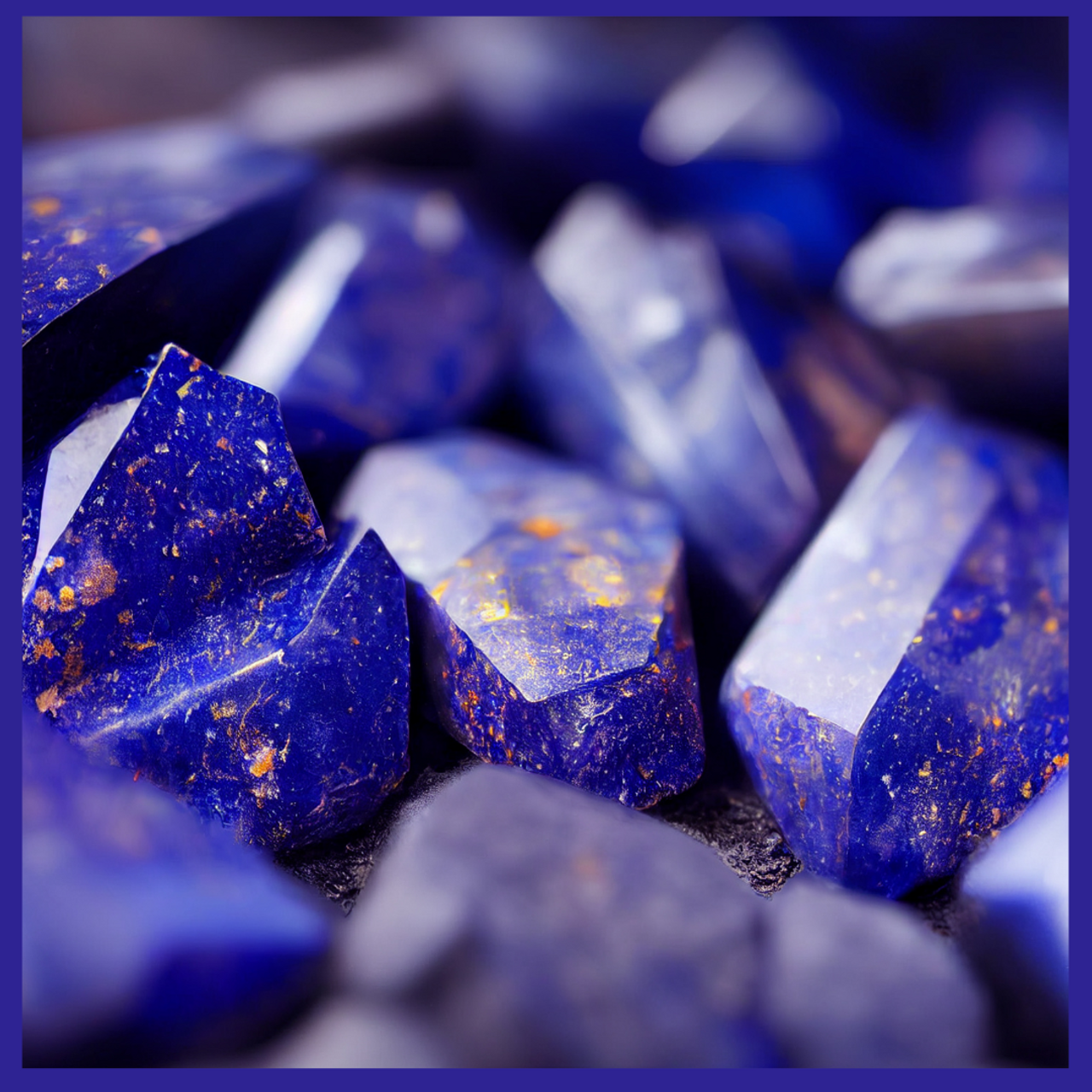Blue Lapis Lazuli
Blue Lapis Lazuli is a striking blue gemstone prized for its intense color and historical significance. Here are key points about Blue Lapis Lazuli:
1. **Composition:** Lapis Lazuli is a metamorphic rock composed primarily of the mineral lazurite (a complex mineral composed of sodium, calcium, aluminum, silicon, sulfur, and oxygen), along with varying amounts of other minerals such as calcite, pyrite, and sodalite.
2. **Color and Appearance:** Blue Lapis Lazuli is known for its deep blue color with specks or veins of golden pyrite and white calcite. Its color can vary from light to dark blue, often with a semi-translucent to opaque appearance.
3. **Sources:** Lapis Lazuli has been mined for thousands of years in Afghanistan, where some of the finest quality stones are found. It is also found in other countries including Russia, Chile, Myanmar, and Pakistan.
4. **Uses:**
- **Jewelry:** Blue Lapis Lazuli has been used in jewelry for centuries, prized for its vibrant blue color and striking golden flecks. It is typically cut into cabochons, beads, and cameos for use in rings, necklaces, earrings, and bracelets.
- **Historical and Cultural Significance:** Lapis Lazuli has a rich history of use in art, jewelry, and religious artifacts in ancient civilizations such as Mesopotamia, Egypt, Greece, and Rome. It was highly valued for its color and believed to have spiritual and healing properties.
- **Metaphysical Properties:** In metaphysical beliefs, Blue Lapis Lazuli is associated with enhancing wisdom, communication, and inner truth. It is considered a stone of intuition and protection.
5. **Care:** Blue Lapis Lazuli has a Mohs hardness of 5 to 5.5, making it relatively soft compared to other gemstones. It should be protected from scratches and harsh chemicals, and cleaned gently with mild soap and water.
Overall, Blue Lapis Lazuli is treasured for its deep blue color, historical significance, and metaphysical properties, making it a sought-after gemstone for both its beauty and cultural heritage.

